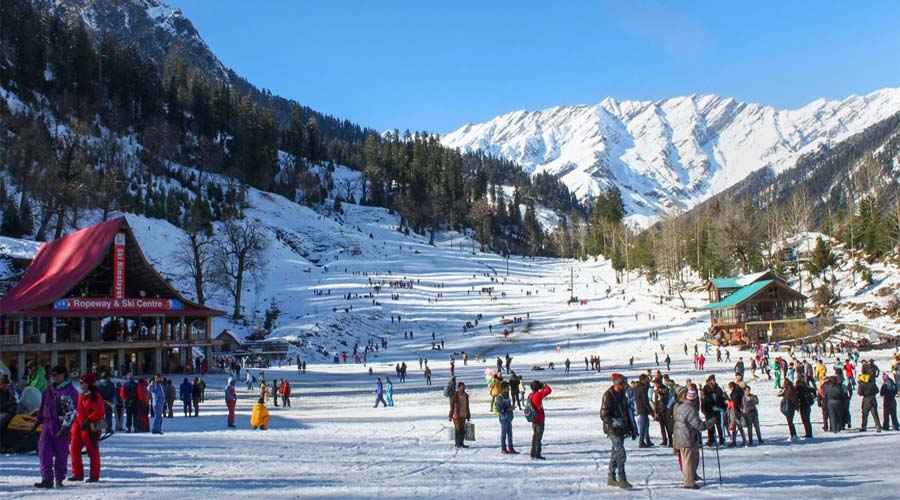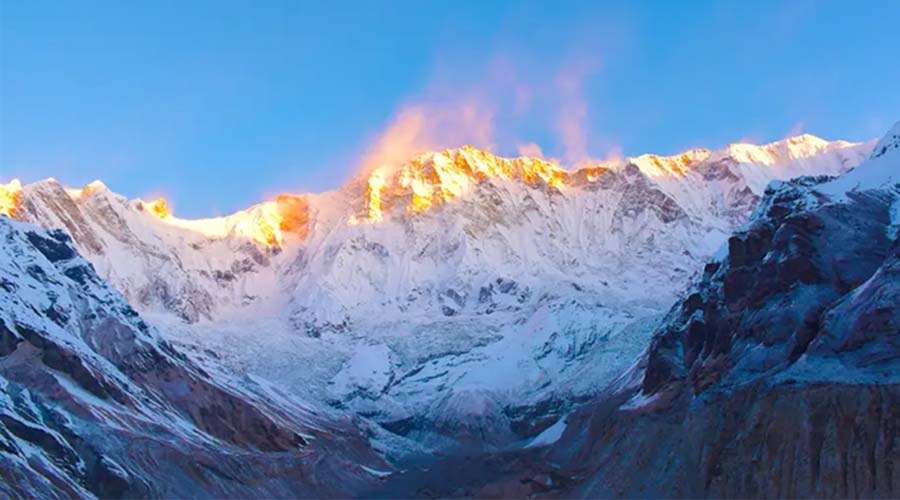Nestled in the heart of the Pir Panjal range of the Himalayas, Solang Valley is one of the crown jewels of Himachal Pradesh. Just 14 kilometers northwest of the popular hill station of Manali, this enchanting valley has earned a reputation as both an adventurer’s paradise and a nature lover’s delight. Known for its snow-capped peaks, rolling meadows, and adrenaline-pumping sports, Solang Valley attracts thousands of travelers from across the globe every year. Whether it’s the thrill of paragliding over lush landscapes, skiing in fresh powdery snow, or simply soaking in breathtaking views, Solang Valley promises an unforgettable experience.
The Geography and Climate of Solang Valley
Perched at an altitude of around 8,500 feet above sea level, Solang Valley offers a dramatic panorama of the Himalayas. Surrounded by towering mountains, glaciers, and thick forests of pine and deodar, the valley changes its personality with the seasons. Winters transform the region into a wonderland blanketed by snow, while summers reveal lush meadows, colorful wildflowers, and crystal-clear skies.
The climate here swings between two extremes: chilly winters and pleasant summers. From December to February, temperatures often drop below freezing, making the valley a hub for snow sports and winter tourism. From April to October, when the landscape thaws, Solang serves as a base for trekking, camping, and paragliding. It is this diversity that makes the valley a year-round destination.
A Playground for Adventure Enthusiasts
One of the key reasons Solang Valley has gained global recognition is because of its adventure sports offerings. For thrill-seekers, there’s no shortage of adrenaline-fueled activities.
1. Paragliding
Paragliding remains the most popular activity here, offering spectacular aerial views of snow-clad peaks and lush meadows. The valley provides both short flights for beginners and longer flights for more seasoned adventurers. On clear summer days, watching a sky peppered with colorful gliders is a mesmerizing sight in itself.
2. Skiing and Snowboarding
When winter covers the slopes in thick sheets of snow, Solang mimics a European ski resort. Professional instructors and equipment rentals are available, making it accessible even for first-time skiers. Snowboarding enthusiasts also flock here to ride the powdery slopes. The valley regularly hosts winter sports competitions that draw athletes and fans alike.
3. Cable Car and Ropeway Ride
For visitors who prefer a more relaxed way to enjoy panoramic scenery, the Solang ropeway is the perfect option. This cable car ride carries tourists to higher viewpoints, offering commanding vistas of glaciers and surrounding mountains without physical effort.
4. Zorbing
During the warmer months, zorbing—rolling downhill inside giant transparent balls—is a favorite activity. It is both amusing and exhilarating, especially for families and children visiting the valley.
5. Trekking and Hiking
The valley serves as a launching pad for treks to nearby destinations such as Anjani Mahadev, the Beas Kund Glacier, and Dhundi. These hikes offer travelers a chance to immerse themselves in the unspoiled Himalayan wilderness.
Natural Beauty Beyond Adventure
While Solang Valley is often synonymous with adventure sports, its raw natural beauty is equally captivating. In spring and summer, the meadows burst into a palette of greens and yellows, while streams gush with icy meltwater from the mountains. Towering peaks like Hanuman Tibba and Friendship Peak form an awe-inspiring backdrop visible from almost every corner of the valley.
The serenity of Solang is best experienced during early mornings. Mist hovers over the fields, birds call from pine trees, and the golden hue of sunshine slowly spreads across the mountains. Photography enthusiasts, in particular, find themselves endlessly inspired by the shifting colors and moods of the valley.
Culture and Local Life
Though primarily a tourist destination, Solang retains strong ties with its local traditions. Inhabited by mountain communities, the valley area reflects the simple yet vibrant Himachali way of life. Local villagers are warm and hospitable, often eager to share stories of their land and culture. Festivals such as Dussehra and Winter Carnivals are celebrated with enthusiasm, showcasing folk dances, regional music, and delicious Himachali cuisine.
Visitors get a chance to savor authentic local flavors such as sidu (a stuffed bread), madra (a lentil and yogurt-based dish), and the ever-refreshing chai made with mountain herbs. These small cultural encounters add depth to the experience of visiting Solang, making it more than just a natural or adventure destination.
Accessibility and Infrastructure
Reaching Solang Valley is relatively convenient from Manali, which is itself well-connected by road with major cities like Delhi and Chandigarh. The closest airport is Bhuntar, located about 63 kilometers from Manali. Shared taxis, private cabs, and even local buses ferry travelers to the valley.
In recent years, tourism infrastructure has developed considerably. From budget homestays and guesthouses to cozy resorts offering modern amenities, Solang caters to travelers across a wide spectrum. Adventure operators and guides can also be easily booked for sports and treks, ensuring safety and assistance for first-timers.
Best Time to Visit
The best time to travel depends entirely on the experiences one seeks:
- December to February: Perfect for snow activities like skiing, snowboarding, and enjoying a snowy landscape.
- March to June: Ideal for paragliding, trekking, zorbing, and soaking in lush greenery.
- September to October: Clear skies, fewer tourists, and a chance to enjoy the changing colors of the landscape.
Monsoons, particularly in July and August, are less preferred due to heavy rainfall and occasional landslides.
Sustainable Tourism and Preservation
With growing popularity, Solang Valley faces the challenge of balancing tourism with ecological preservation. Increased visitor footfall can strain local resources, contribute to waste, and disturb fragile alpine ecosystems. In this context, efforts toward sustainable tourism have gained importance. Responsible travelers are encouraged to minimize plastic use, respect local customs, and support eco-friendly establishments. Preserving the pristine environment is essential so future generations can continue to enjoy the beauty and adventure Solang offers.
Conclusion
Solang Valley is more than just a hill station or a tourist hotspot—it is a melting pot of adventure, nature, and culture. The towering Himalayas serve as its dramatic stage, while thrill-seeking sports, tranquil landscapes, and warm local hospitality script its unforgettable charm. Whether you are an avid adventurer craving your next rush, a photographer seeking picture-perfect sceneries, or a family looking for a memorable holiday amid the mountains, Solang Valley has something unique for everyone.
Its seamless blend of adrenaline and tranquility makes it one of the most compelling destinations in Himachal Pradesh. A trip to Solang Valley often lingers in memory long after the journey ends, reigniting a desire to return to the place where nature and adventure truly meet.


